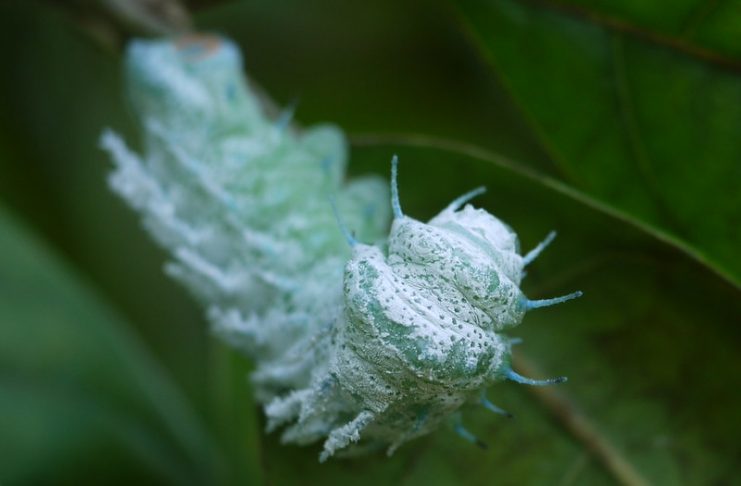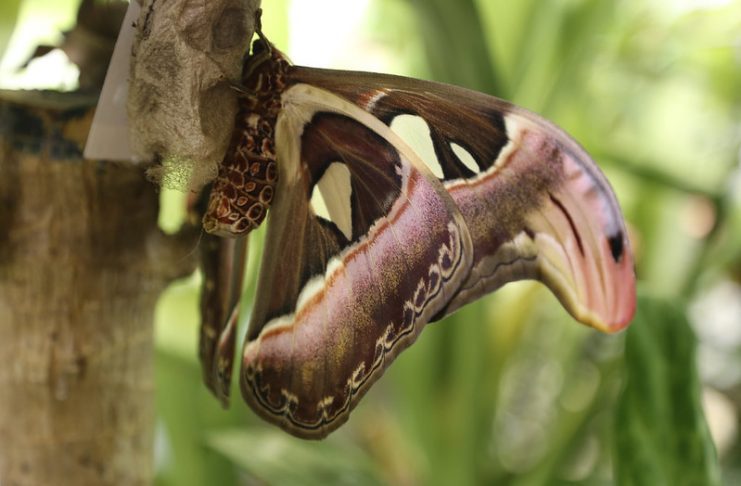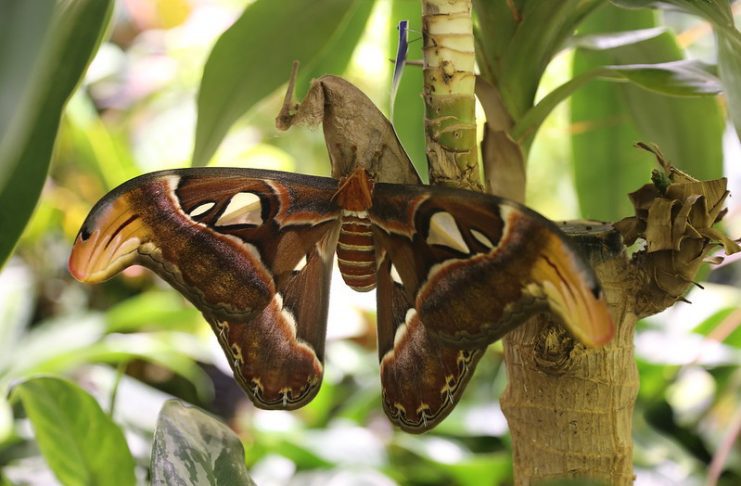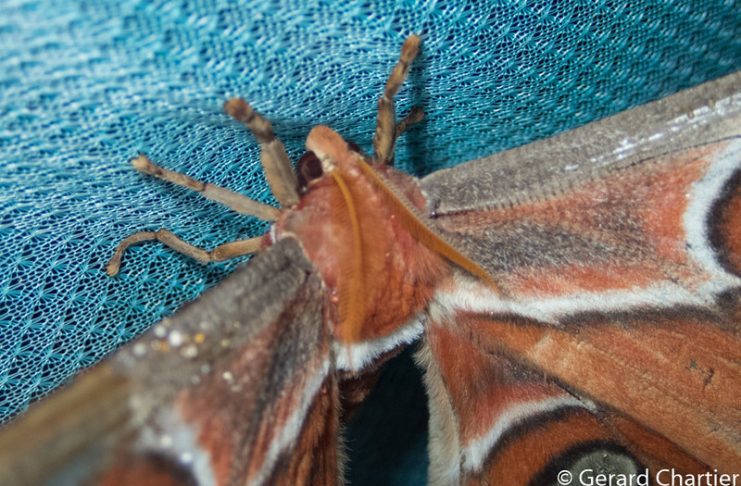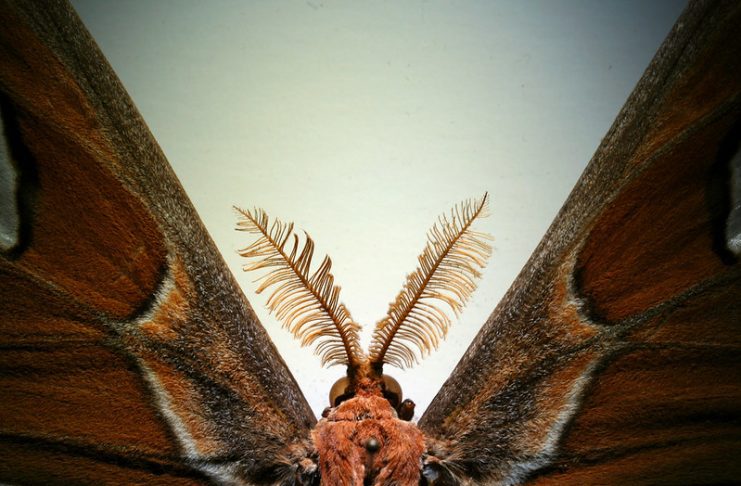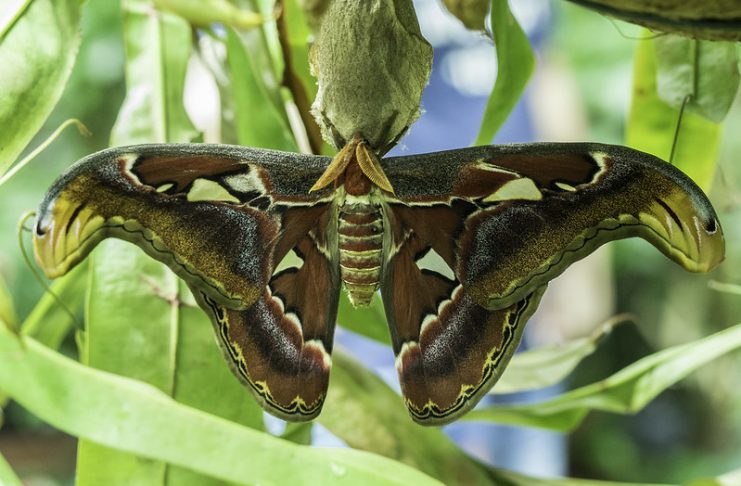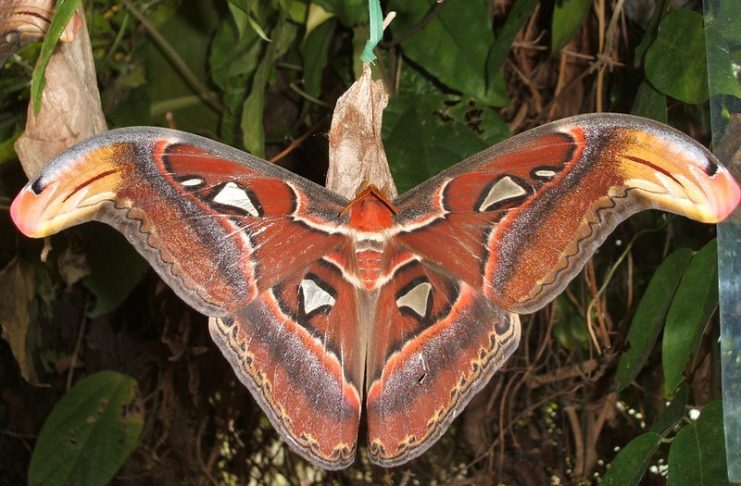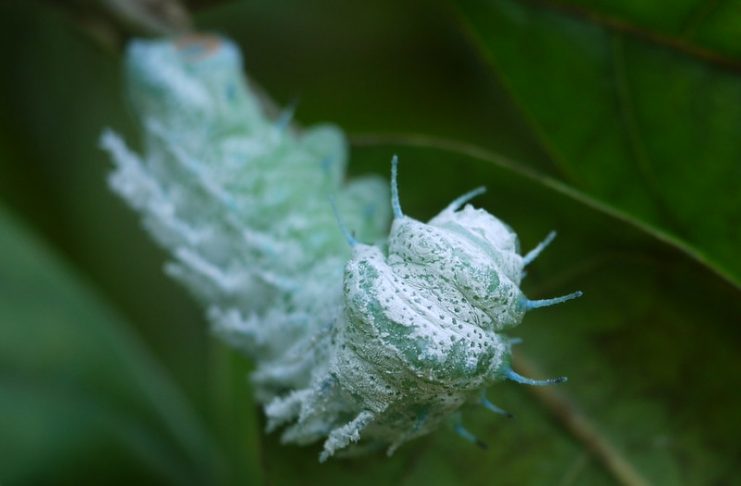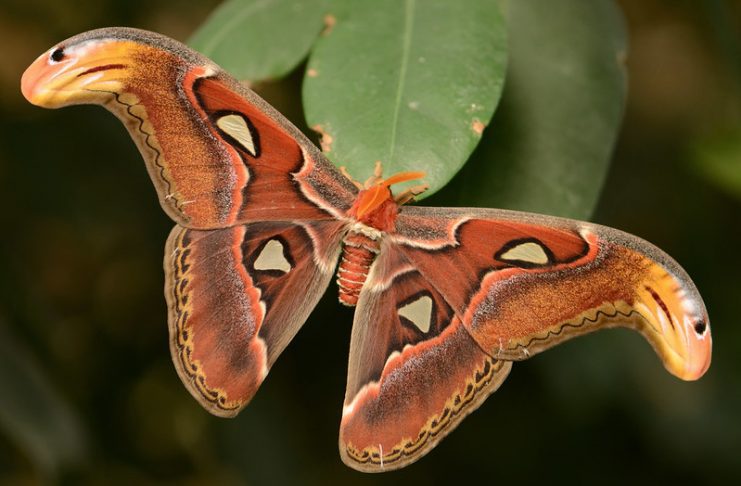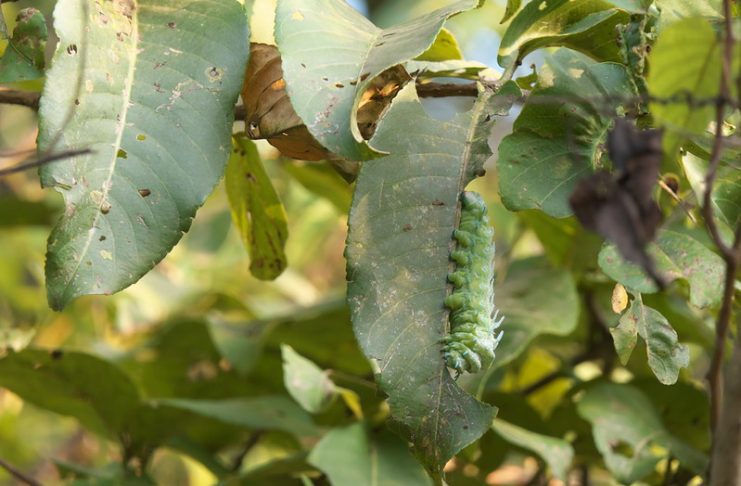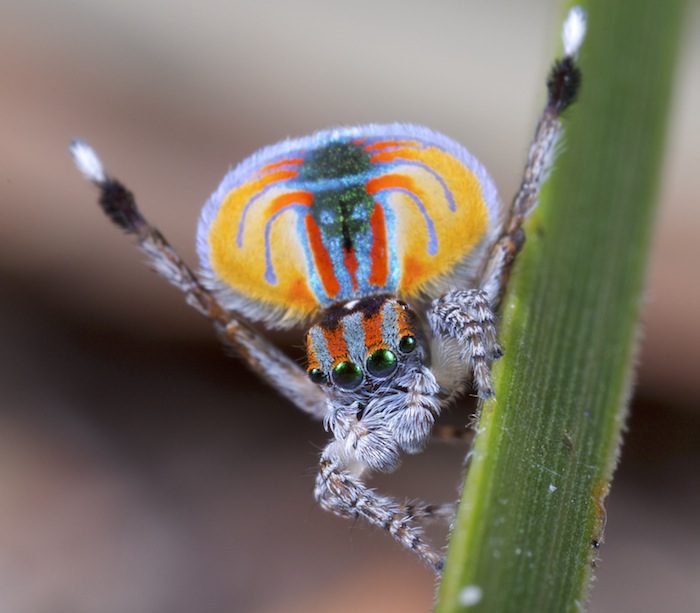The Attacus Atlas Moth – One of the Largest Insects in the World
The Attacus Atlas Moth is one of the largest lepidopterans (butterflies & moths). The Atticus atlas Moth is captivating. Its beauty, detail on its wings, and sheer size at each stage of its life cycle are some of the reasons why it is so compelling.

Like most Lepidoptera (moths and butterflies), females are noticeably heavier than their male counterparts. Males have broader antennae.
The wings are much larger than the body. The top of the wings is red-brown, with a pattern of black, white, and pink lines. There are also three-sided scale-less windows that are black.
The wings’ undersides are either lighter or more faded. The tips of both forewings are marked with a visible extension. This is to resemble the snake’s head or upper body. When the moth faces potential predators, the wings move to intensify the resemblance.
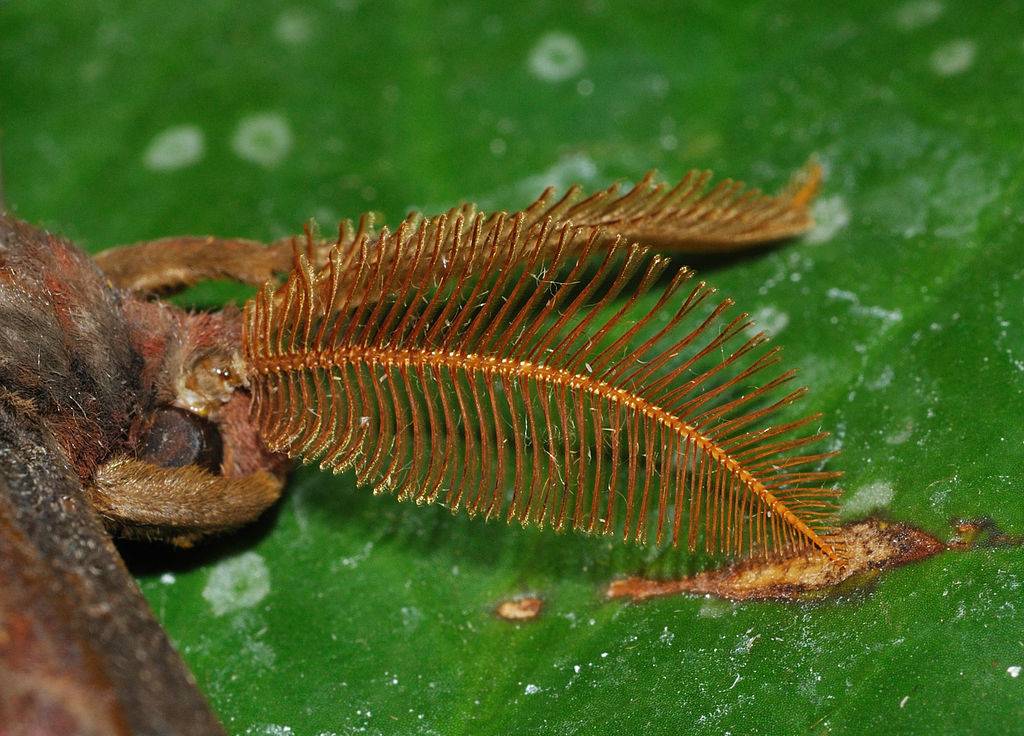
Attacus Atlas has no mouth, and they do not eat after they emerge from their cocoon. They rely on fat storage to store energy. Each flight uses valuable energy and may reduce their short lives by days to around one to two weeks.
They fly as little as possible to conserve energy. A female will always be on the lookout for a male and return to her nest, fertilize, and lay eggs.
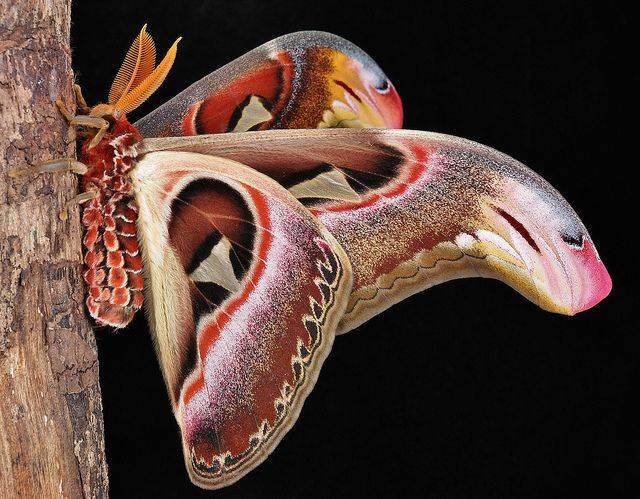
Classification
- Common Name: Attacus atlas moth
- Scientific Species Name: Attacus atlas
- Genus: Attacus
- Class: Insecta
- Family: Saturniidae
- Order: Lepidoptera
- Subphylum: Hexapoda
- Phylum: Arthropoda
- Kingdom: Animalia
10 Facts About The Attacus Atlas Moth
- The Attacus atlas moth is a large, beautiful species of moth native to Southeast Asia.
- It is known for its large size, with a wingspan that can reach up to a foot in length.
- The Attacus atlas moth is named after the Greek Titan Atlas, who was known for his strength and endurance.
- The moth’s wings are typically a shades of brown and gray, with distinctive patterns and bright colors.
- The Attacus atlas moth is one of the largest moths in the world and is popular among insect collectors and photographers.
- The Attacus atlas moth has a relatively short lifespan, with adult moths living for just a few weeks.
- During the adult stage, Attacus atlas moths do not feed and are primarily focused on reproduction.
- The Attacus atlas moth caterpillar is a voracious eater and can consume large amounts of leaves during its larval stage.
- The Attacus atlas moth has a number of natural predators, including birds, bats, and reptiles.
- The Attacus atlas moth is threatened by habitat loss and other human activities.
Attacus Atlas Moths Habitat & Distribution Map
The Habitat of the Atlas Moths is usually dry tropical forests, secondary forests, and shrublands in South Asia, East Asia, and Southeast Asia. One specimen, a mature female, was discovered in Ramsbottom in England in 2012. It arrived on a windowsill and is believed to have escaped from a private collection.

The Attacus Atlas moth: Where did the name come from?
Atlas moths were named after Atlas, the Greek mythological titan. The Cantonese word for “snakehead moth” is found in Hong Kong. It refers to the prominent extension of the forewing, which resembles a snake’s skull.
Another Theory
Scientists believe that the moth may have been named due to its unique wings patterns. They also look similar to a paper map. Because the moth’s tips look like the tops of deadly cobra snakes, its Cantonese name is a snake’s head moth.
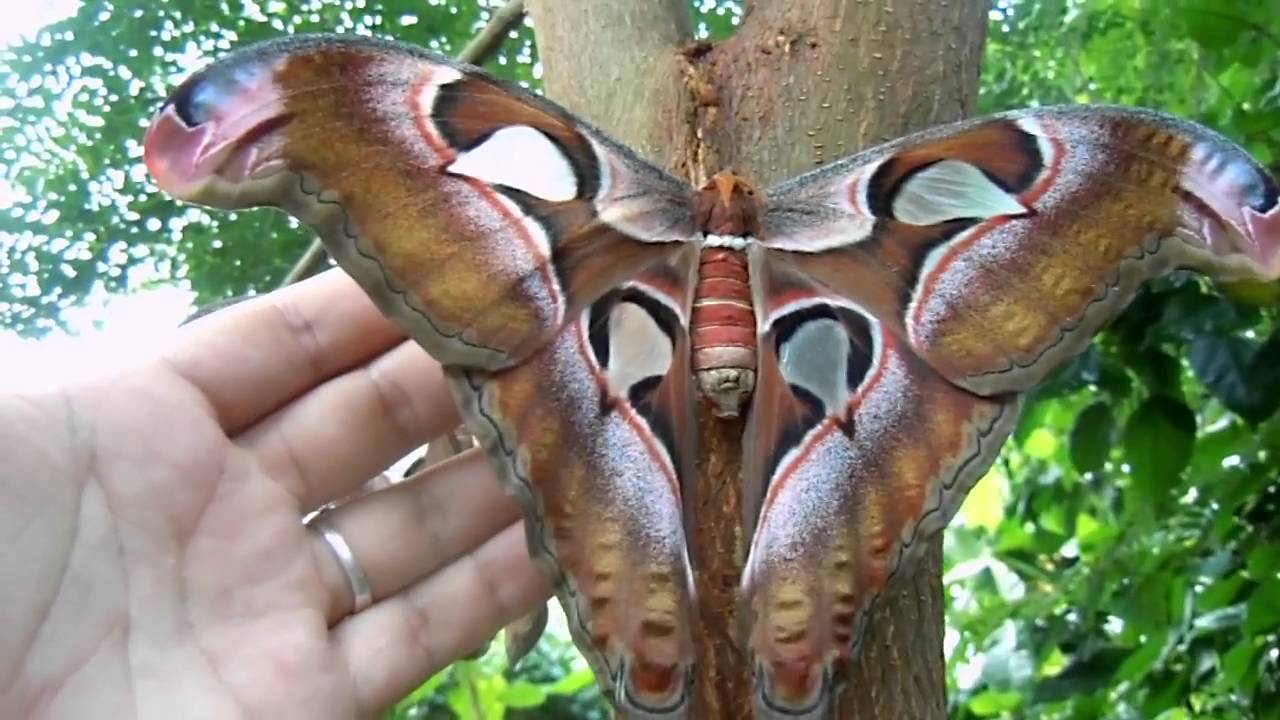
Atticus Atlas Moth Size
The Atticus atlas moth is a large species of moth native to Southeast Asia. It is known for its large size and beautiful wings, which can reach up to 12 inches in width. The wingspan of the Atticus atlas moth is one of the largest among moths and can exceed a foot in length.
In addition to its size, the Atticus atlas moth is notable for its bright colors and distinctive patterns, making it a popular subject for photography and insect collectors. Despite its impressive size, the Atticus atlas moth has a relatively short lifespan, with adult moths living for just a few weeks.
The white witch (Thysania Agrippina), Attacus Caesar, and the Hercules Moth (Coscinocera Hercules) are the only ones that can surpass it in terms of wingspan.

Atticus Atlas Moth Reproduction
The Atticus atlas moth is a species of moth that is native to Southeast Asia. Like all insects, the Atticus atlas moth undergoes complete metamorphosis during its life cycle, which includes four stages: egg, larva (caterpillar), pupa (cocoon), and adult. The adult stage is the briefest and is primarily focused on reproduction.
During the adult stage, male Atticus atlas moths will emit pheromones to attract females for mating. After mating, the female will lay eggs on the leaves of plants, typically in a single layer. The eggs will hatch into caterpillars, which will begin to feed on the leaves of the plant.
The caterpillars will go through several stages of growth, shedding their exoskeleton and growing larger each time. When they are ready to pupate, the caterpillars will spin a cocoon and enter the pupal stage. Inside the cocoon, the caterpillars undergo metamorphosis, transforming into adult moths.
Once the transformation is complete, the adult moths will emerge from the cocoon and begin their brief adult lives. Adult Atticus atlas moths do not feed and are primarily focused on reproduction. After mating, the cycle begins again, with the female laying eggs and starting the next generation of Atticus atlas moths.
Attacus Atlas – The Race to Grow
The adult atlas moth can grow huge, but they don’t feed once they emerge from their cocoon. The proboscis, or nozzle that other butterflies and moths use for nectar is small and doesn’t work. Atlas moths can only survive for between one and two weeks without the ability to feed. They depend on the energy they get from their caterpillar stage.
Attacus Atlas Caterpillars
Attacus atlas caterpillars, which live in the wild, consume the leaves of citrus, guava, cinnamon, Jamaican cherry, and different leaves of evergreen trees. The moth is native to China, Malaysia, India, and Indonesia. It shares a food source with Atlas, the Titan god in Greek mythology.
What does the Atlas caterpillar look like?
Attacus Atlas Moth caterpillars are beautiful! They are greenish-white and feed ferociously on leaves until the cocoon stage.
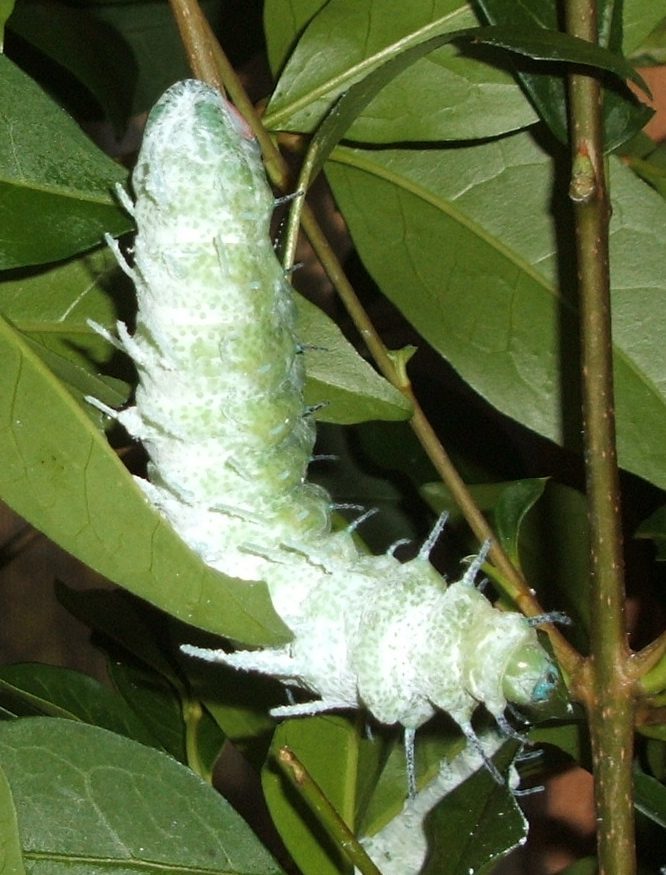
Atticus Atlas Moth Cocoon Stage
The Atticus atlas moth goes through a complete metamorphosis, like all insects, during its life cycle. After hatching from an egg, the Atticus atlas moth larva, or caterpillar, feeds on the leaves of various plants until it is ready to pupate. When it is time to pupate, the caterpillar will spin a cocoon, typically made of silk, to enclose and protect its body during the transformation into a moth.
The Atticus atlas moth caterpillar spins its cocoon by secreting liquid silk from glands located near its mouth. The caterpillar wraps itself in the silk, forming a protective covering around its body. The cocoon stage is an important part of the moth’s life cycle, as it is during this time that the caterpillar undergoes its transformation into an adult moth.
Inside the cocoon, the caterpillar’s body undergoes dramatic changes, including the development of wings, the hardening of its exoskeleton, and the emergence of reproductive organs. The process of metamorphosis can take anywhere from a few weeks to several months, depending on the species of moth and the environmental conditions. Once the transformation is complete, the adult moth will emerge from the cocoon and begin its brief adult life.
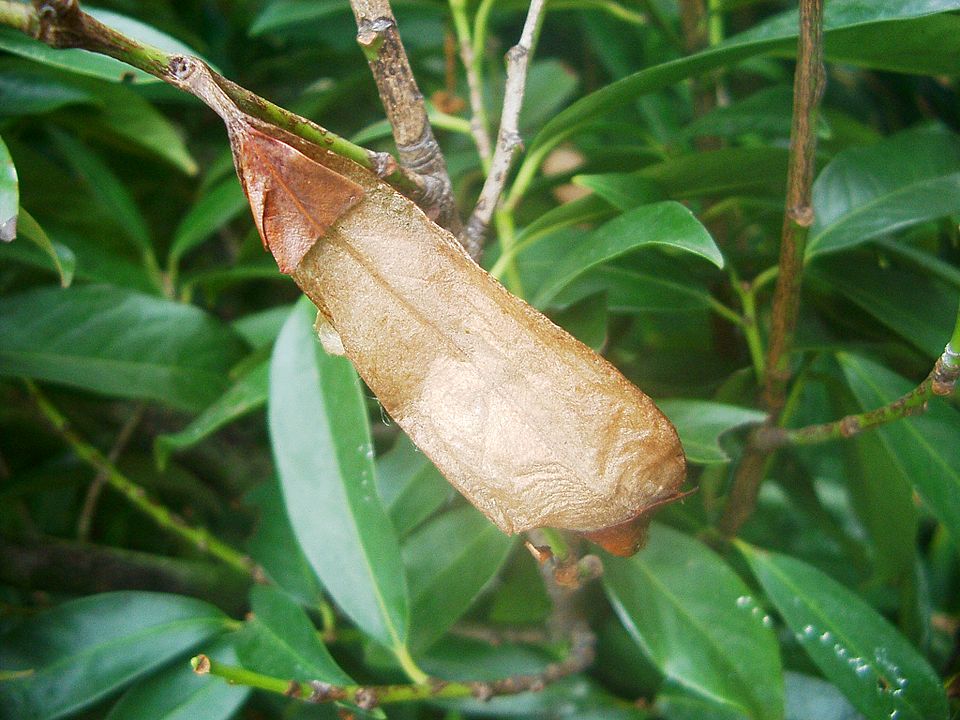
Adult Stage
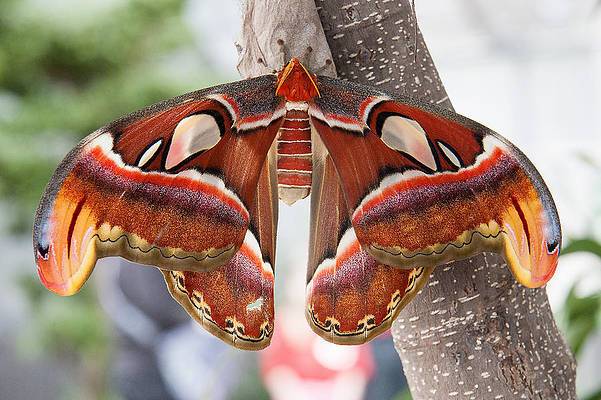

Atticus Atlas Moth Defensive Mechanisms and Predators
The Atticus atlas moth is a species of moth native to Southeast Asia that is known for its large size and beautiful wings. Like many insects, the Atticus atlas moth has a number of defensive mechanisms to protect itself from predators.
One of the main defensive mechanisms of the Atticus atlas moth is its large size and bright colors. The moth’s wingspan can reach up to a foot in length, making it one of the largest moths in the world. The bright colors and distinctive patterns on its wings can also warn predators that the moth is poisonous or distasteful.
Another defensive mechanism of the Atticus atlas moth is its ability to blend in with its surroundings. The moth’s wings are typically shades of brown and gray, which can help it camouflage against tree bark and other natural environments.
Despite these defensive mechanisms, the Atticus atlas moth is still vulnerable to a variety of predators, including birds, bats, and reptiles. To protect itself, the moth may use its wings to fly away from danger or use its body to startle predators by puffing up and exposing its bright colors.
The Atticus atlas moth also has a number of natural predators, including spiders, praying mantises, and other insects. In addition to these natural predators, the Atticus atlas moth is also threatened by habitat loss and other human activities.
What Does The Atticus Moth Caterpillar Do When Threatened?
The Atticus atlas moth caterpillar is a larval stage of the Atticus atlas moth, a species of moth native to Southeast Asia. Like many insects, the Atticus atlas moth caterpillar has a number of defensive mechanisms to protect itself from predators.
A defensive mechanism of the Atticus atlas moth caterpillar is its ability to startle predators by puffing up and exposing its bright colors. The caterpillar may also release a noxious substance from glands located near its head to deter predators.
The caterpillar may try to escape by crawling away or dropping from the plant on a silk thread. The caterpillar may also play dead, becoming motionless in an attempt to avoid being noticed by the predator.
Overall, the Atticus atlas moth caterpillar has various tactics to protect itself from threats, including camouflage, noxious substances, and evasive behavior.
Attacus Atlas Moth Images and Gallery
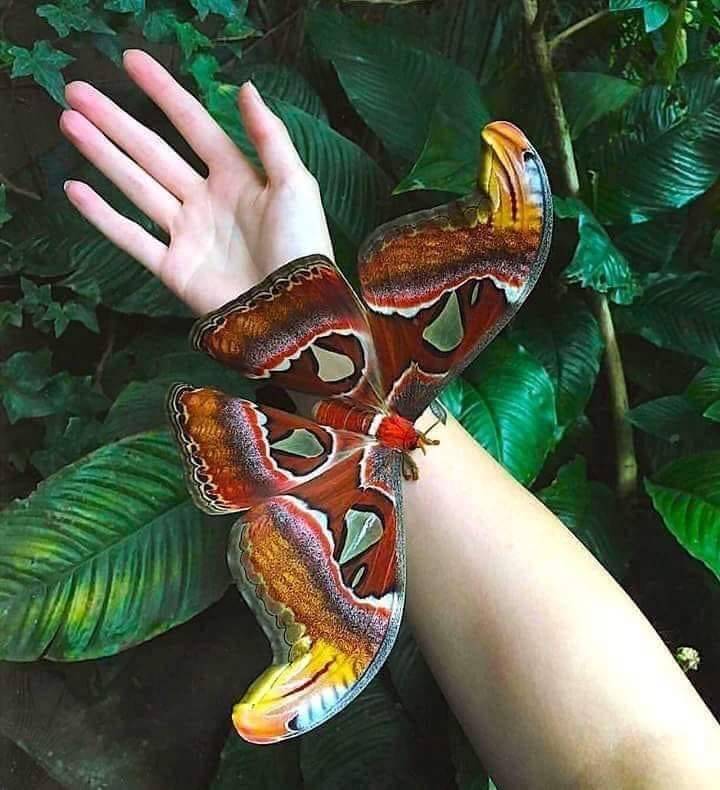
What is the average life expectancy of Atlas moths?
Their average life expectancy is about 5-7 days, but this varies depending on the species. The Attacus atlas species does not have a mouth and, therefore, cannot eat. They live on the energy they have as caterpillars. They live for a short time, usually between 1 and 2 weeks.
Atlas moths are one of the most stunning creatures to come out of the natural world. They make their homes in huge colonies, and each individual moth is incredibly unique. Adult atlas moths can be quite massive, but they race to grow just like any other creature does in order to survive.
Why don’t Atlas moths have mouths?
The Atlas moth’s proboscis is a short but beneficial one. Once they emerge from their cocoons, they do not eat and rely on fat storage to fuel their bodies. Each flight wastes precious energy and can cut into their short life spans by a few days.
Which is the largest moth in the entire world?
Hercules moth vs. Atlas moth
The Hercules moth (Coscinocera Hercules) is a large species of moth found in the rainforests of northern Australia and New Guinea.
It is known for its impressive size, with a wingspan that can reach up to 12 inches in length, making it one of the largest moths in the world. The Hercules moth is named after the Greek hero Hercules due to its strength and size.
The Attacus atlas moth (Attacus atlas) is another large species of moth found in Southeast Asia.
It is also known for its impressive size, with a wingspan that can reach up to a foot in length. Like the Hercules moth, the Attacus atlas moth is named after a Greek mythological figure, in this case, the Titan Atlas.
The Hercules moth and the Attacus atlas moth are known for their large size and beautiful wings, adorned with distinctive patterns and bright colors. However, there are some differences between the two species.
The Hercules moth is found in the rainforests of Australia and New Guinea, while the Attacus atlas moth is found in Southeast Asia.
The Hercules moth has a wingspan that can reach up to 12 inches, while the Attacus atlas moth’s wingspan can reach up to a foot in length.
Overall, the Hercules moth and the Attacus atlas moth are impressive and fascinating insects worth studying and learning about.

Where can you find the Attacus Atlas Moth in the wild?
Attacus atlas moth is found in Southeast Asia’s subtropical and tropical forests. The Atlas moth, Attacus atlas, is a large saturniid moth that was only discovered in 1989. This species can be easily distinguished from other moths by the wing band found on their wingspan.
The Atlas Moth’s wing colors include rusty brown, light yellow and red, and purple and black. The wings have two triangles that look like translucent windows.
Are Attacus Atlas moths nocturnal?
Attacus atlas moths are nocturnal and will be active during the night.
Adult Atlas Moths are usually present during the latter half of the wet season from January to March. However, because they lack mouths and cannot eat or drink in this life stage, moths fly at night and rest during the day.









































